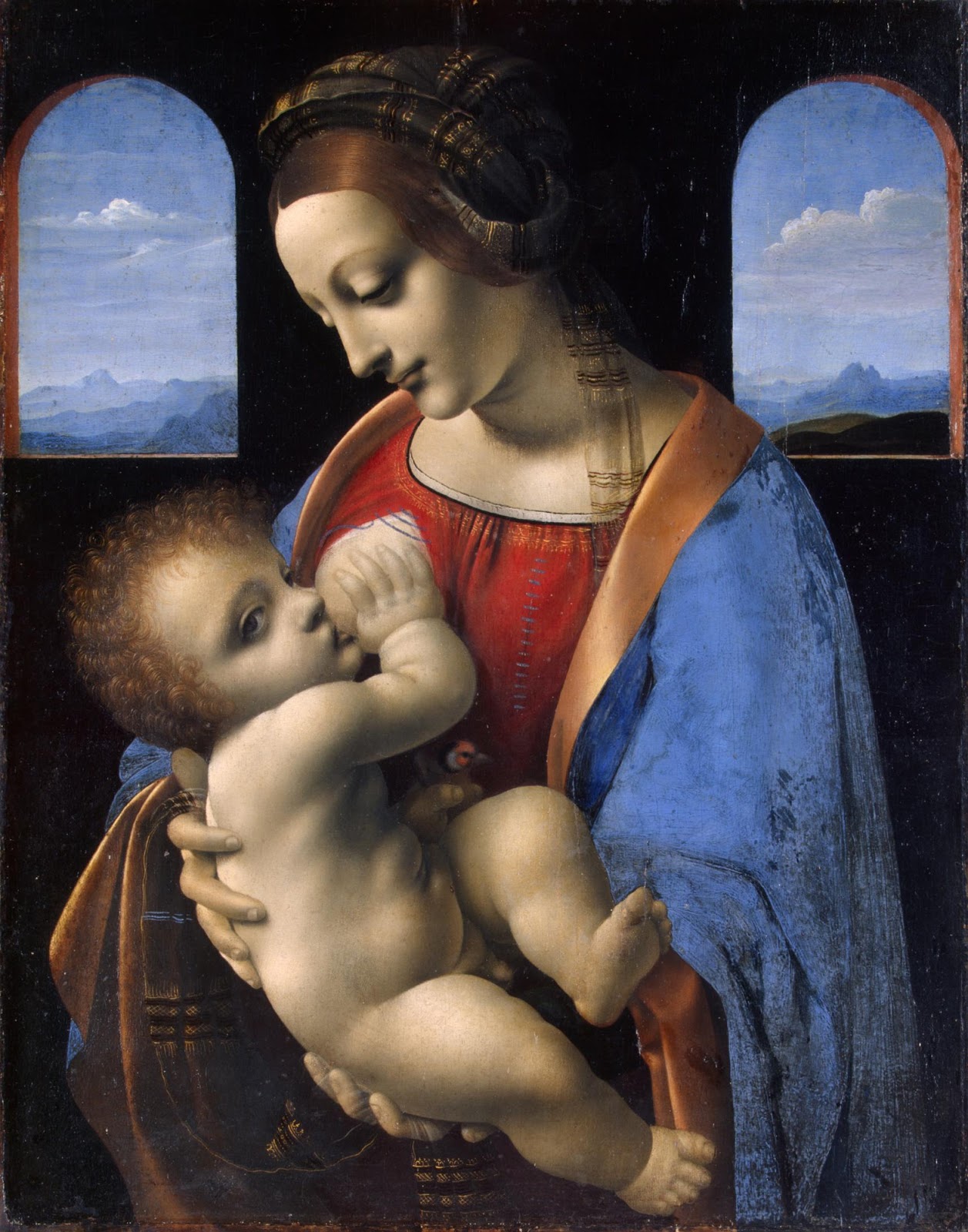Copying was an essential part of any 19th century artist’s education and the Musée du Louvre - unlike most academies and ateliers - was open to both men and women who studied its many masterpieces.
Louis Béroud was a regular copyist at the Louvre; indeed, in August 1911, it was Béroud who alerted authorities that Leonardo da Vinci’s Mona Lisa was missing (the painting, stolen by Vincenzo Peruggia, was returned two years later).
Béroud so relished the practice of copying works in the museum's collection, that he made at least twenty-six compositions of the subject.
Here, a woman in blue paints at an easel positioned in front of Leonardo’s monumental painting of the so-called Virgin of the Rocks.
Sitting on a stool with a protective tarp beneath her, she raises her right arm, touching her paintbrush to the surface of the canvas, her left hand resting on her hip, and a ready rag spills out of the box of supplies open on a stool to her left.
Almost all of the copyists in Béroud’s scenes are women who enjoyed access to the museum as amateur painters. | © Sotheby's
Louis Béroud | An elegantly dressed copyist at the Louvre, 1898 | Sotheby's










